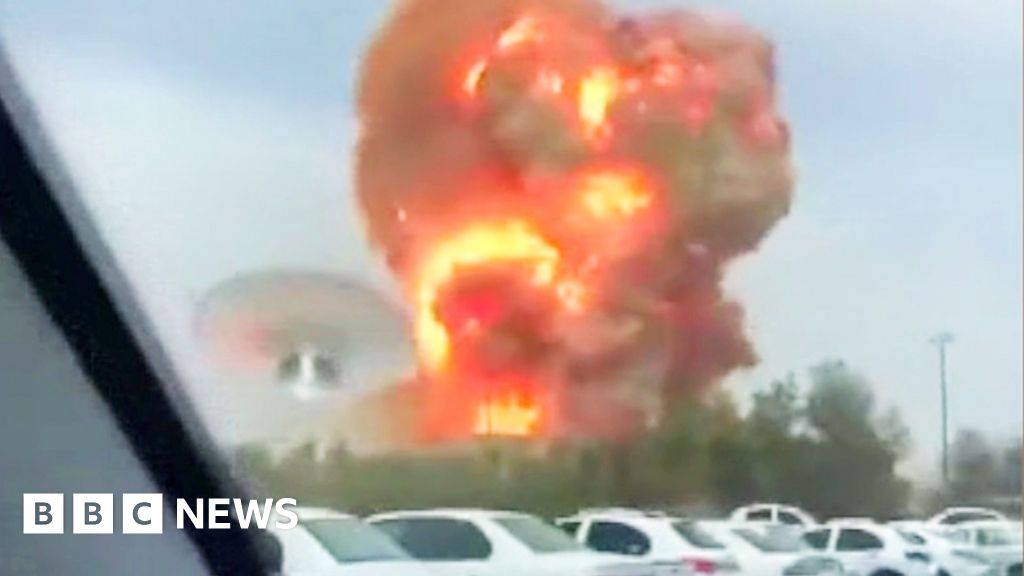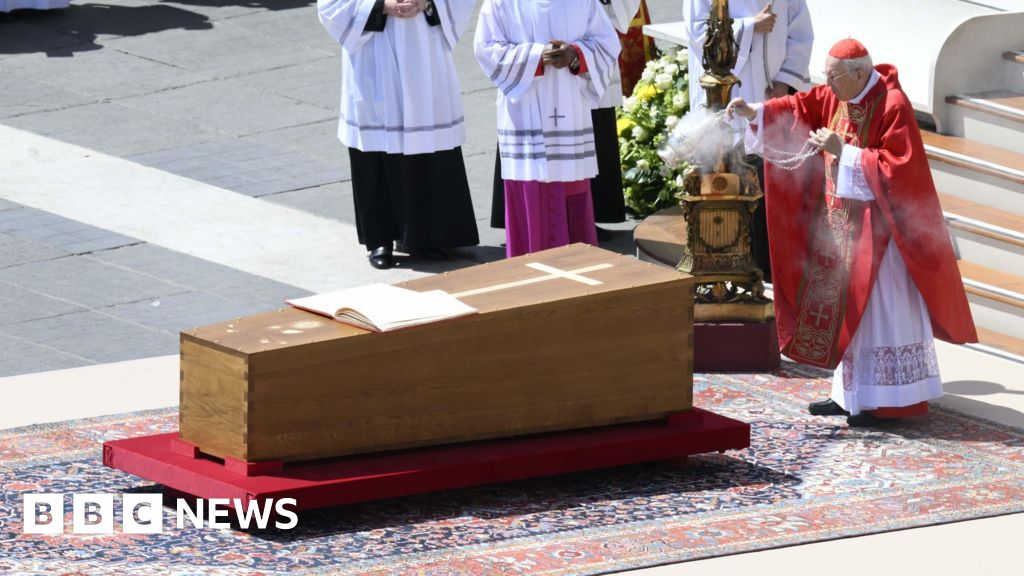ARTICLE AD BOX
By Emmanuel Onyango
BBC News, Nairobi
Image source, BBC/Peter Njoroge
Image caption,Decades-old ornamental palm trees are among those uprooted
Rubble, bare earth and tree stumps mark the route of a super highway under construction in Kenya's capital, Nairobi, upsetting environmentalists - especially in the wake of the COP26 summit.
Rows of mainly indigenous trees that once lined the route of the new four-lane 27km (16-mile) Nairobi Expressway have been felled as construction nears completion.
Ornamental palm trees - some of them planted soon after independence from British colonial rule in the 1960s - have not been spared either.
Last year a century-old fig tree targeted for removal was saved by the president after a public outcry - but campaigners' voices about the hundreds of others have been drowned out.
Image source, AFP
Image caption,This old fig tree was spared the axe after a campaign to save it
Elizabeth Wangithi, from the Green Generation Initiative, who earlier this month was among those rallying world leaders in Glasgow to reduce the impact of climate change, is devastated by the destruction in the heart of one of the city's main thoroughfares.
"We previously geographically mapped out 200 trees marked for felling along Kenyatta Avenue alone. It's a sorry state of affairs," she told the BBC.
The devastation has already seen flocks of marabou storks and other birds that perched and nested on the trees migrate to tall buildings in the city centre.
Suspension order ignored
The Chinese-financed highway, some of which is elevated, will link the main airport in the east to western suburbs. It is intended to make it easier to cross the city and free other roads from Nairobi's notorious traffic jams.
Before the $550m (£410m) project started last year, an official environmental impact report said that more than 4,000 young and mature trees would be cut down.
It also flagged its "major negative impact" on air and water quality during construction.
Image source, Getty Images
Image caption,Many marabou storks nest on trees in the city
In response government officials said the Chinese contractor building it would plant trees elsewhere - five for every one felled.
But this will not be in Nairobi - and environmentalists fear such promises may not be kept.
Nature Kenya's Paul Gacheru points out that little account is taken of how old the trees being felled are - and the time it took to grow them.
"They are doing beautification. They are putting some grass, some flowers. But the value of those flowers versus the tress that have been cut cannot be equal," said Mr Gacheru.
Ms Wangithi agrees: "The developers say: 'It's OK. We'll just plant new trees somewhere else.' But this is not OK and we know in our hearts that this is not OK. Every tree in the city counts and every tree in the city must live."
Image source, BBC/Peter Njoroge
Image caption,Tree stumps can be seen all along the route
This iconic green space was saved in the 1990s by environmentalists, led by the late Nobel Peace Prize laureate Wangari Maathai, thwarting the then-ruling party's plan to build its huge HQ and shopping complex there.
The highway's design has subsequently been tweaked - but a coalition of environmental organisations, including Green Generation Initiative and Nature Kenya, went to court in June 2020 to stop the project, arguing that it had gone ahead without public consultation.
Yet construction and the chopping down of tress has continued, despite the law requiring a suspension of works pending the environment court's decision.
According to Mark Odaga, from Natural Justice - which is also part of the coalition, the problem comes down to details.
The report approving the project gave little away about how the China Road and Bridge Corporation (CRBC) would deal with the environmental impact before, during and after construction.
"A public consultation would require them to give us that information," Mr Odaga told the BBC.
Activist shot dead
Nairobi straddles forests to the west and savannah grasslands to the east, with three rivers running through it.
It is popularly known as the "Green City in the Sun", but its green spaces are being eaten up everywhere by commercial and infrastructural developments - it is not just the Nairobi Expressway to blame.
Image source, BBC/Peter Njoroge
Image caption,It is the government's lack of consultation about big projects that upsets people
To the north and east, huge bypasses are being built that are spewing out red dust and rocks in already congested neighbourhoods.
To the south, a high-speed railway has been built through a national park, which activists say poses a threat to wildlife.
Trees lining roads in the suburbs have also been cut down to create space for giant billboards.
Without warning, Nairobi's Uhuru Park and Central Park were recently closed for three months - officially to be spruced up.
This has sparked consternation as photos have since emerged of building work going on there. Last year, Uhuru Gardens was similarly shut without warning - the authorities then explained it was to create a memorial area for independence heroes.
But again it is the lack of consultation that angers many residents.
And the odds are stacked against conservationists.
In July, prominent environmental activist Joannah Stutchbury was shot dead near her home in Nairobi.
The 67-year-old had been getting death threats for campaigning against the destruction of Kiambu Forest by developers eyeing the prime site on the outskirts of the city.
Critics say the government is barrelling ahead with the Nairobi Expressway because President Uhuru Kenyatta wants it finished before he leaves office - it is seen as his legacy project.
Image source, BBC/Peter Njoroge
Image caption,It is unlikely that Nairobi's famous matatus will be able to afford the toll to use the elevated highway
The CRBC has said it will open six months ahead of schedule in time for the elections next August.
But doubts too have been cast over whether the highway will really ease congestion in the city as motorists will have to pay a toll to use it. Some see it as a road for the rich in a city where most people use matatu minibuses to travel.
Ms Wangithi says those in government should rather keep the health of the city in mind when considering their legacy. She says green spaces are the lungs of a city - areas that are also important for the mental health of its residents.
"I'm grieving because by cutting down trees to create more space for roads, we are undermining the children's and young people's sense of agency and meaning."
More on Nairobi's super highway:

 3 years ago
69
3 years ago
69








 English (US) ·
English (US) ·